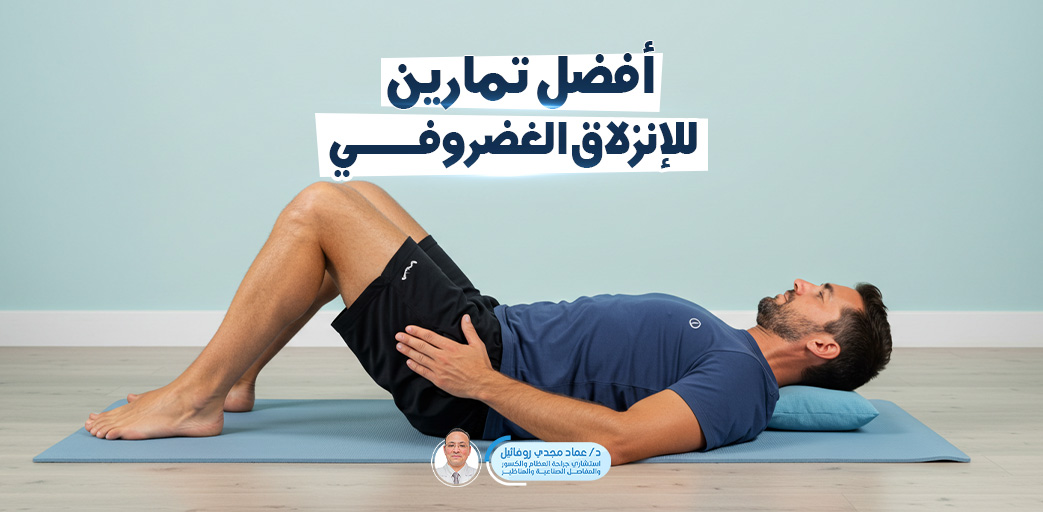


If you're looking to take control of your health and well-being, scheduling a medical appointment is a great first step. Whether it's a routine check-up, a specialist consultation, or a follow-up appointment with your healthcare provider, it's important to prioritize your health and take the time to address any concerns or questions you may have.


Many individuals with herniated discs suffer from limited mobility and chronic pain, constantly searching for effective non-surgical ways to relieve their symptoms.
In this article, we provide you with a selection of doctor-recommended herniated disc exercises, complete with illustrations to help you perform each move safely and correctly.
These visuals will ensure proper posture and prevent common mistakes — guiding you on the path to recovery, step by step.
Most patients feel sharp pain in the back or neck that worsens when bending, sitting for long periods, or lifting even light objects.
Nerve irritation can lead to spinal stiffness and difficulty with simple motions like turning or bending.
If the herniated disc compresses the nerves that supply the limbs, the patient may experience numbness, tingling, or reduced strength — which greatly limits movement.
In advanced cases, patients may feel unstable while walking or notice an involuntary lean to one side.
Even basic tasks like getting out of bed or climbing stairs can become painful, leading to reduced daily activity.
Exercise is one of the most helpful methods to relieve herniated disc symptoms — but not all exercises fit every stage of herniation. Treatment plans and suitable exercises vary depending on nerve pressure severity and the impact on mobility:
Light exercises may be started after medical evaluation
Focus on gentle stretches and strengthening supporting muscles
Excellent results with consistency
Exercises are helpful but must be guided by a physiotherapist
Some movements are strictly prohibited, especially bending or spinal pressure
A back brace may be recommended during exercise
Unsafely exercising can worsen the condition
In some cases, exercise is prohibited until after surgical assessment
Treatment usually begins with medications or surgery before introducing physical activity
Important Tip:
Never start any exercise without consulting your doctor or physical therapist — even “light” movements could increase nerve pressure and lead to complications if done incorrectly.
Position: Lie on your back with knees bent and feet flat on the floor
Movement: Tighten abdominal muscles and press your lower back toward the floor, then relax
Reps: 10 reps × 3 sets
Benefit: Strengthens lower abdominal muscles and reduces lumbar spine pressure
Position: Lie on your back
Movement: Pull one knee toward your chest with your hands; hold for 10–15 seconds
Reps: 3 times per leg
Benefit: Relieves lower back muscle tension
Position: On hands and knees
Movement: Arch your back upward (cat), then downward (cow), alternating with breathing
Reps: 10 times
Benefit: Improves spine mobility and reduces stiffness
Position: Lie on your stomach
Movement: Press your upper body upward using your hands while keeping the pelvis on the ground
Reps: 10 slow repetitions
Benefit: Reduces pressure on lumbar discs
Position: Lie on your back with knees bent
Movement: Lift your hips while tightening your abs and glutes
Reps: 10–15 times
Benefit: Strengthens the back and gluteal muscles
Position: Sit on your knees and extend your arms forward
Movement: Let your torso rest between your thighs while arms stretch forward
Hold: 30 seconds × 3 times
Benefit: Opens up lumbar vertebrae and relieves pressure
Position: Lie on your back, lift your right arm and left leg together, then alternate
Movement: Alternate sides while tightening the core
Reps: 10 per side
Benefit: Builds balance and strength in deep spinal stabilizers
Although exercise is key to relieving pressure on spinal nerves, certain movements can worsen the condition, especially if done without proper guidance.
Full forward spinal flexion (toe touches, etc.):
Increases disc pressure, especially in the lumbar spine
Heavy overhead or shoulder weight lifting (e.g., weighted squats, military press):
Directly compresses spinal discs
Twisting exercises (e.g., Russian twists or fast trunk rotations):
Can cause uneven disc stress and worsen symptoms
Jumping or high-impact cardio (e.g., running on hard surfaces, jump rope):
Increases shock on spinal joints
Deep yoga stretches or extreme backbends without supervision:
May overstretch discs and nerves if performed incorrectly
Even though exercises are part of a good recovery plan, continuing without monitoring warning signs can make things worse. Stop immediately and consult your doctor if you notice:
Severe or sudden pain during or after the exercise, especially in the back or legs
Spreading numbness or tingling in arms or feet — could indicate worsening nerve compression
Muscle weakness (e.g., foot drop or weak grip)
Loss of balance or unsteady walking — possible neurological involvement
Bladder or bowel dysfunction — urgent medical attention needed (possible cauda equina syndrome)
Important Note:
Pain is not always normal during exercise. If you experience any of the above symptoms, stop and contact a specialist immediately to prevent serious complications.
Choosing the right exercises is essential for healing herniated discs — but doing them correctly is even more important.
That’s why we’ve provided a curated list of safe, illustrated exercises to be your daily guide — whether at home or during physiotherapy.
Bookmark this page and refer to it whenever needed. The accompanying images are your best tool to ensure every movement strengthens your spine — not strains it.